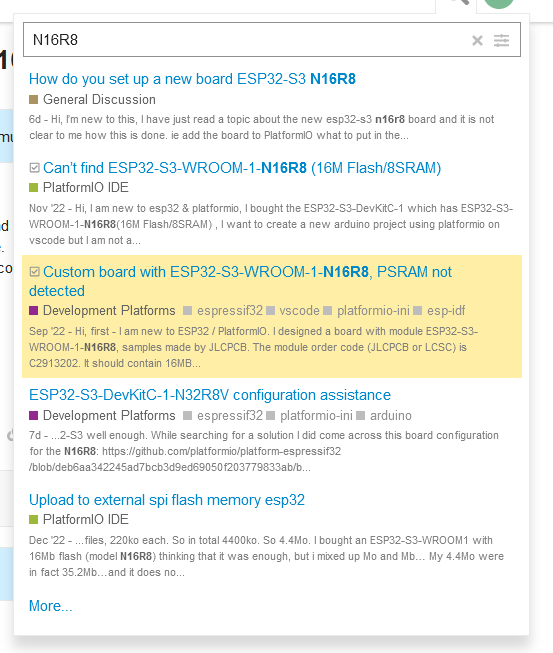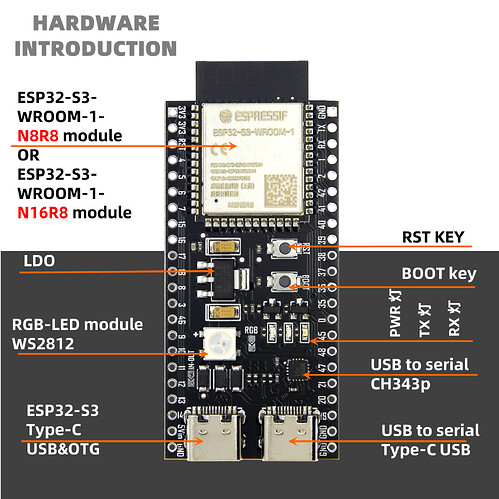Thanks for your help. I think my main issue is not having any docs for the board. The “USB” port which on most similar boards is not the programming port, does accept the upload and a recent retry I get the serial output message (LED blink must be a coding problem or bad GPIO reference). Which now leaves me wondering what the “COM” port is, which I was expecting to be the JTAG with the other being USB/UART bridge…
I have a couple different setup options. One is a Mac Mini M1 (Monterey 12.7.5) the other is Intel x86_64 Debian-based (Mint 20.3). The board I bought is called DWEII ESP32-S3-DevKitC-1-N16R8 from Amazon.ca.
ini file:
[env:esp32-s3-n16r8]
platform = espressif32
board = esp32-s3-devkitc-1-n16r8v
framework = arduino
board json file (as linked in the thread above):
{
"build": {
"arduino":{
"ldscript": "esp32s3_out.ld",
"partitions": "default_16MB.csv",
"memory_type": "qio_opi"
},
"core": "esp32",
"extra_flags": [
"-DARDUINO_ESP32S3_DEV",
"-DBOARD_HAS_PSRAM",
"-DARDUINO_USB_MODE=1",
"-DARDUINO_USB_CDC_ON_BOOT=1"
],
"f_cpu": "240000000L",
"f_flash": "80000000L",
"flash_mode": "qio",
"psram_type": "opi",
"hwids": [
[
"0x303A",
"0x1001"
]
],
"mcu": "esp32s3",
"variant": "esp32s3"
},
"connectivity": [
"wifi",
"bluetooth"
],
"debug": {
"default_tool": "esp-builtin",
"onboard_tools": [
"esp-builtin"
],
"openocd_target": "esp32s3.cfg"
},
"frameworks": [
"arduino",
"espidf"
],
"name": "Espressif ESP32-S3-DevKitC-1-N16R8V (16 MB QD, 8MB PSRAM)",
"upload": {
"flash_size": "16MB",
"maximum_ram_size": 327680,
"maximum_size": 16777216,
"require_upload_port": true,
"speed": 921600
},
"url": "https://docs.espressif.com/projects/esp-idf/en/latest/esp32s3/hw-reference/esp32s3/user-guide-devkitc-1.html",
"vendor": "Espressif"
}
main.cpp is pretty basic:
#include <Arduino.h>
// #define LED_BUILTIN 48
void setup() {
Serial.begin(115200);
delay(500);
Serial.println("Starting");
}
void loop() {
digitalWrite(RGB_BUILTIN, (millis() / 1000) % 2);
}



